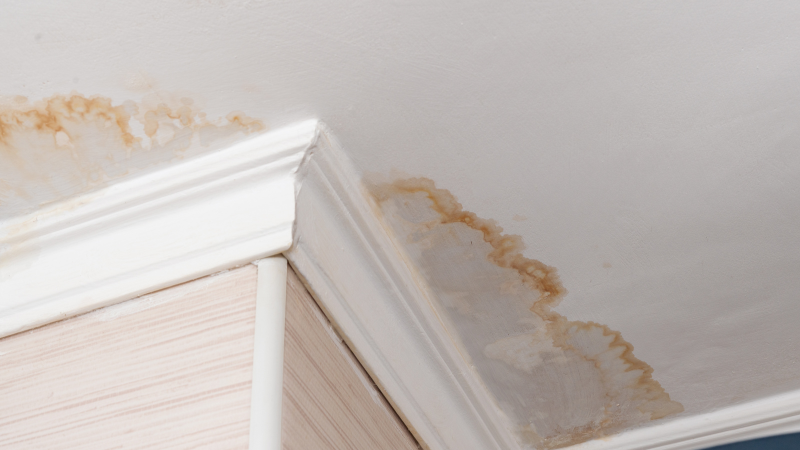Ways to Repair a Water-Damaged Wall in the Bathroom
Ways to Repair a Water-Damaged Wall in the Bathroom
Blog Article
Are you on the lookout for details around Preventing Water Damage in the Bathroom?

The bathroom is incredibly prone for wet accumulation and prospective water damages as a result of the frequent use of water in it. This short article uses straightforward examination techniques to help discovering water damages threats.
The constant use of water in the bathroom makes it incredibly vulnerable for moist accumulation as well as prospective water damages. By checking it consistently, you can lower water related damages.
The following set of evaluations is easy to carry out as well as ought to be done when in every three months in order to keep your shower room healthy as well as to avoid prospective water damages triggered by the tub, the shower, pipe joints and plumbing, sinks, cabinets, and also the commode
Do not disregard carrying out these evaluations and be thorough while executing them. Remember that these basic evaluations can save you a great deal of cash by offering very early indicators for water damage
Sinks and also Cabinets
Sinks and also cupboards are exposed to dampness as well as humidity daily and also are commonly neglected. Inspect consistently under the sink as well as on the countertop over it. Fix any drip in the catch as it might suggest drainpipe issues. Look around the sink, slow-moving draining pipes may show a blocked drainpipe. Replace sink seals if they are cracked or loosened.
Bathtub and also Shower
The shower as well as bathtub call for special focus as well as upkeep. Inspect the tiles and also replace if fractured. Make certain that there is no missing cement between the floor tiles. Examine and also replace fractured caulking at joints where the walls fulfill the floor or the bath tub. Blocked drains pipes as well as pipelines issues will certainly avoid the bath tub from drying and also may show serious troubles beneath the tub. Consult with an expert immediately to avoid structural damage. Take notice of discolorations or soft locations around the bathtub walls as they might indicate an interior leakage.
Plumbing
Signs for water damage are tough to spot considering that most pipes are mounted inside the walls.
Pay special focus to flooring as well as wall surfaces moisture as well as discolorations as they may suggest an unseen plumbing problem. Inspect dampness degrees in adjoining spaces too.
The Toilet
The bathroom is a vulnerable water joint. Check the water lines as well as look for leakages around the toilet seat, in the hose pipe, as well as under the water container. If you spot any kind of signs of moisture on the floor around the bathroom, look for leakages in the toilet rim as well as storage tank seals.
Realize that hanging toilet bowl deodorants boosts the opportunities for obstructions.
How to Prevent Water Damage in Your Bathroom?
Water damage repair is an expensive, meticulous, and lengthy process. Unfortunately, bathrooms are the most susceptible rooms to water damage due to toilets, showers, and sinks. Pipes and fixtures wear out over time and are not immune to damage. But all is not lost, as there are ways to prevent water damage from occurring in your bathroom.
Check Your Plumbing
Nothing lasts forever, especially pipes, which can rust and begin leaking over time. You should periodically conduct pipe inspections and pay attention for any musty smells or water stains that may indicate you need water damage repair. Here are some things to check:
Frequently test valves for your toilet, shower, and sink to ensure they are properly working. Check faucet supply lines hidden under vanities and replace when needed. Replace cracked or deteriorating caulking along sinks, tubs, and showers. If you notice a clog in your sink, call in a professional. Since you can’t check the pipes in the wall, keep an eye out for stains, drywall bubbling, musty smells, and excess moisture; if the bathroom is on a second level, check the ceiling of the room directly below for these signs. Don’t Overwork Your Toilet
One of the most common reasons bathrooms need water damage repair is due to overflowing toilets. Save yourself the hassle of cleanup by being mindful and not pushing your toilet to extreme limits. If you have young children, it is especially important to keep an eye on them when they are in the bathroom and to teach them how to avoid clogging the toilet. Here are some more tips to help prevent your toilet from overflowing:
If you have a septic tank, only use septic-safe toilet paper Do not flush anything down the toilet besides toilet paper; items like diapers and sanitary napkins will clog the piping Pay attention to your toilet’s water level: If it’s low, it could mean it is partially clogged or that there is a crack in the toilet bowl Maintain Your Shower/Tub
Replace showers or tubs with cracks or other damage; even hairline cracks can allow water to seep in and cause damage. Grout and caulk help prevent water from seeping into walls and floors, so repair them if they are chipped, cracked, or deteriorating. Replace torn shower curtains or shower doors with seals that no longer work. Dry the floor and drain water from the tub immediately after use to prevent damage from sitting water. https://www.alure.com/home-improvements-blog/resources/how-to-prevent-water-damage-in-your-bathroom

I'm just very serious about How to Repair and Prevent Bathroom Water Damage and I hope you enjoyed reading the entire entry. Enjoyed our post? Please share it. Let someone else check it out. Thanks for taking the time to read it.
Book Now! Report this page